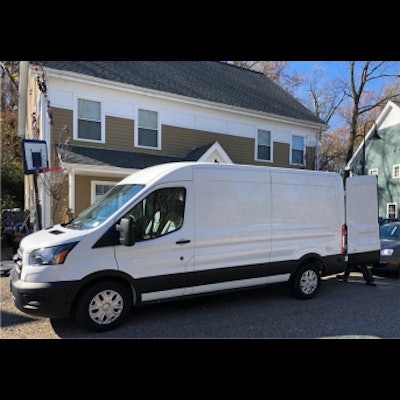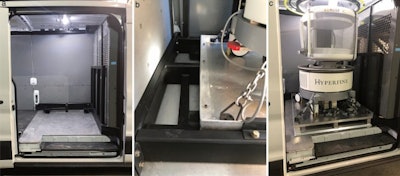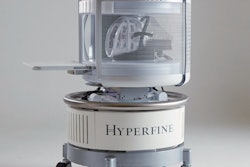
A cargo van kitted out with a portable MRI scanner expands access to the modality to patients in settings that have typically been out of reach -- without compromising image quality, according to a study published April 4 in Scientific Reports.
The results could dramatically change patient care, lead author Sean Deoni, PhD, of Brown University in Providence, RI, told AuntMinnie.com.
"This approach of [taking MRI] to the patient could be transformative for a number of conditions, but particularly those that require routine monitoring," he said. "For example, children with hydrocephalus who may need their shunts replaced -- why should they have to go into a hospital for a scan? Why can't we go to them and scan them at their house, or their school?"
Deoni notes that in many rural areas in the U.S., the nearest clinical MRI system may be an hour or two away. But, the mobile MRI van can bring the scanner to patients, acquire images, and transmit them securely back to a primary care physician or neurologist.
 Scan-a-Van images courtesy of Sean Deoni, PhD.
Scan-a-Van images courtesy of Sean Deoni, PhD.MRI is an important imaging modality for visualizing the brain and central nervous system, but unlike other tools -- such as electroencephalography or functional near-infrared spectroscopy, which can be brought to patient bedside -- MRI is hospital- or facility-based not only because the scanners are large but also because they require electromagnetic shielding and cooling systems, Deoni and colleagues noted. These requirements have made MRI less accessible for particular indications and in field or underresourced settings.
Although mobile MRI shows promise for point-of-care imaging, current iterations use 1.5-tesla magnets and require large trucks that can only travel on high-capacity roadways and must be parked on level, reinforced pads, according to the authors. In the current study, the team sought to investigate whether a van with an MRI scanner with magnetic fields between 50- and 200-tesla could offer an effective alternative to these "mobile" units, with a capacity to travel on local or dirt roads in rural communities, to use portable or fixed power, and to allow for easy unloading and reloading at sites such as schools or assisted living centers.
The team built and tested the use of a removable low-field MRI system (Hyperfine Swoop 64 mT) in a cargo van, which they named "Scan-a-van." The team used phantoms to test the concept.
In field tests, the group found the following:
- Total time from arrival at the site to scanning was five minutes, which included attaching to a power supply, scanner warm-up time, and magnetic field checks.
- There were no significant differences between image segmentation quality, image geometric distortion, image-to-signal noise measures in white matter or thalamic gray matter compared with a hospital-based system.
- The external magnetic field of the van ranged from 0.6 to 2 Gauss, making it safe for individuals with pacemakers, implants, or other medical devices sensitive to magnetic fields.
- The van's weight was safely below its top weight limit and could travel at normal road and highway speeds.
- The group estimated total cost of the van and the scanner plus other equipment (pallets, straps, loading and unloading tools, blankets, cushions) at $110,000, significantly less than the $2.5 million needed for a mobile 1.5-tesla system in a trailer.
"We have successfully demonstrated the ability to acquire quality structural neuro MRI data on a low-field MRI system in a mobile platform for the first time," the authors wrote.
Deoni did concede that the portable system's image quality must be further developed.
"Right now, the [Scan-a-van] images are more than capable for hydrocephalus, muscular sclerosis, and gross abnormalities, but they are a little lacking for the full range of diagnostic applications we can perform on the standard hospital systems," he said. "We're working hard to improve the overall quality [of the system] to enable those diagnostic capabilities."



















